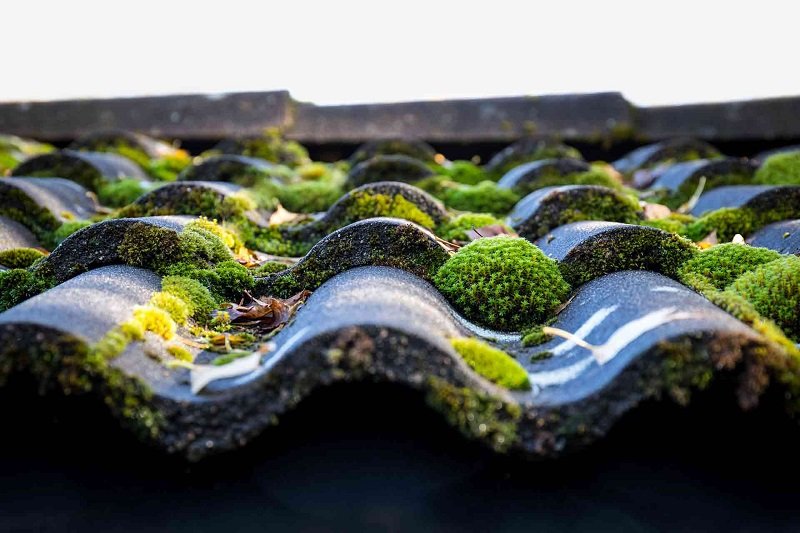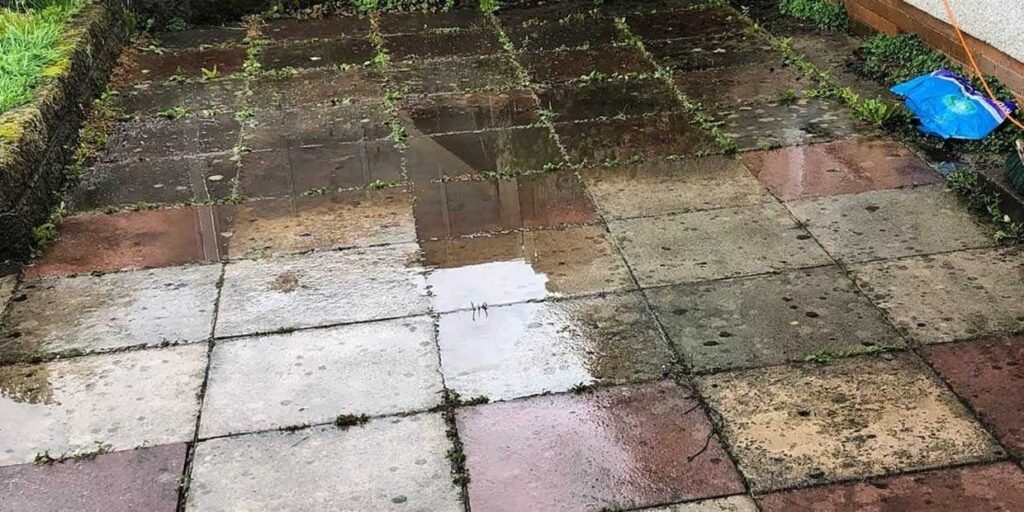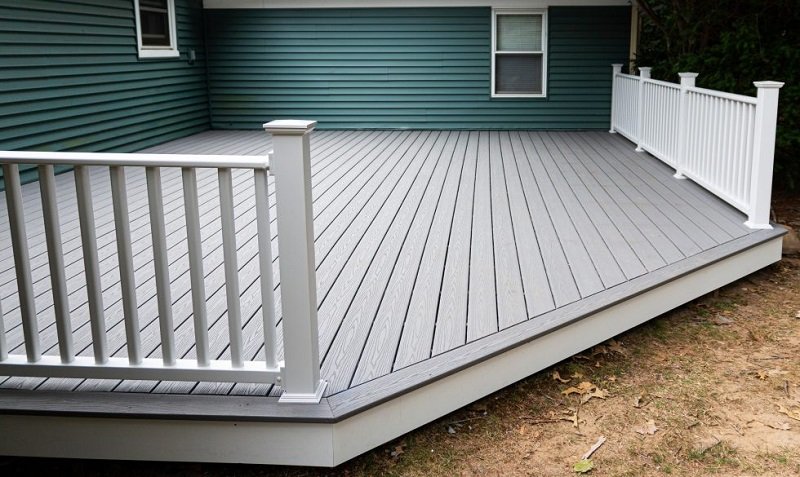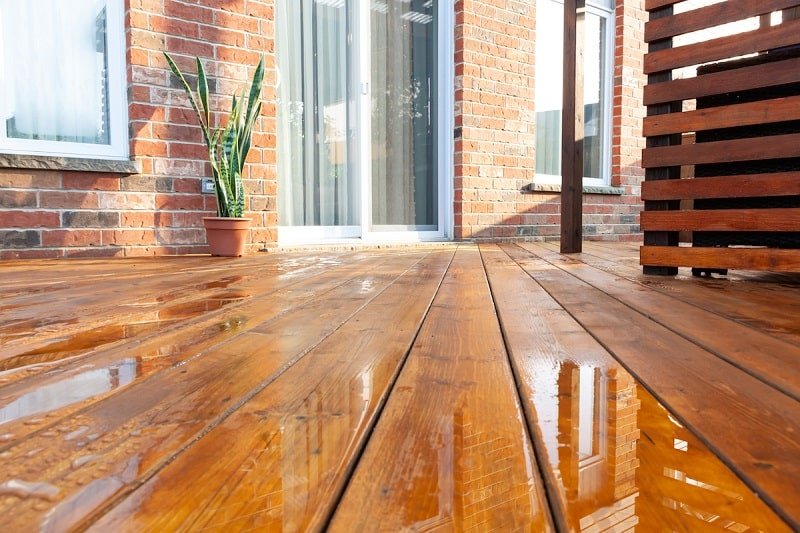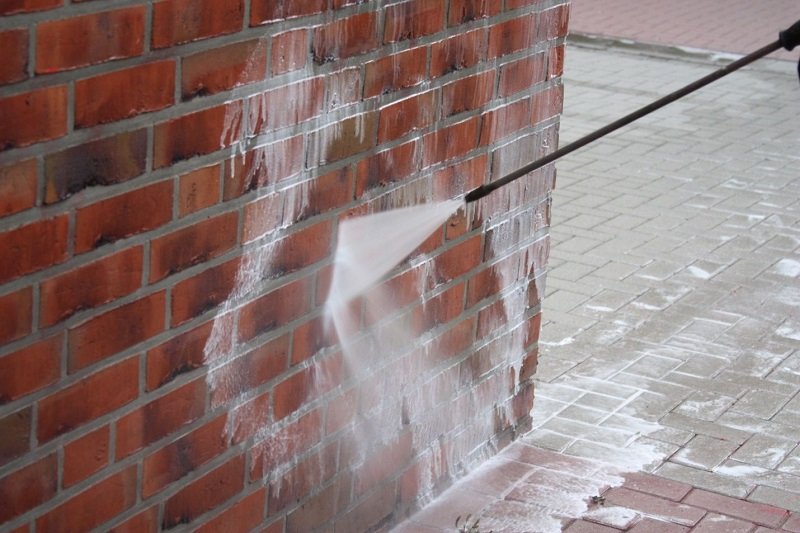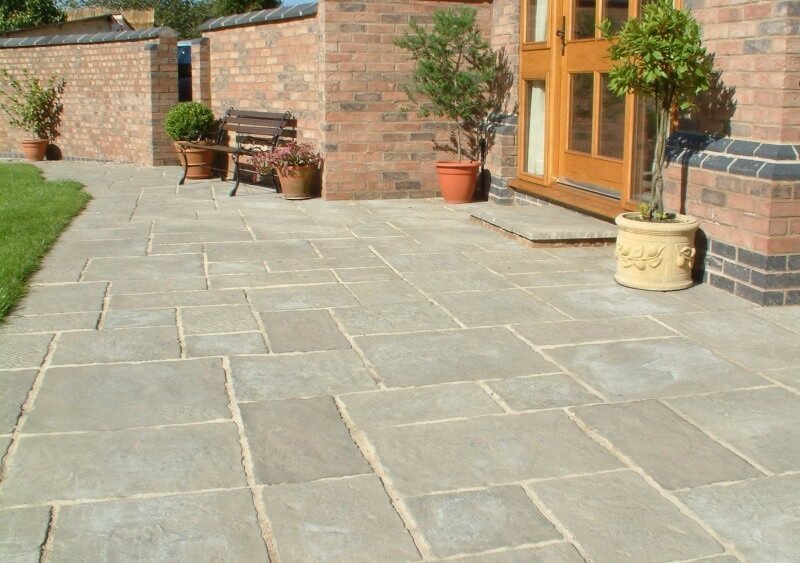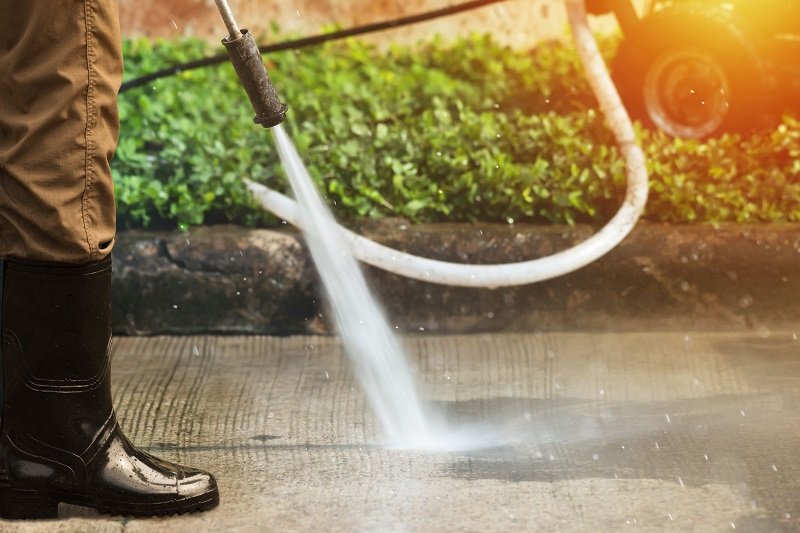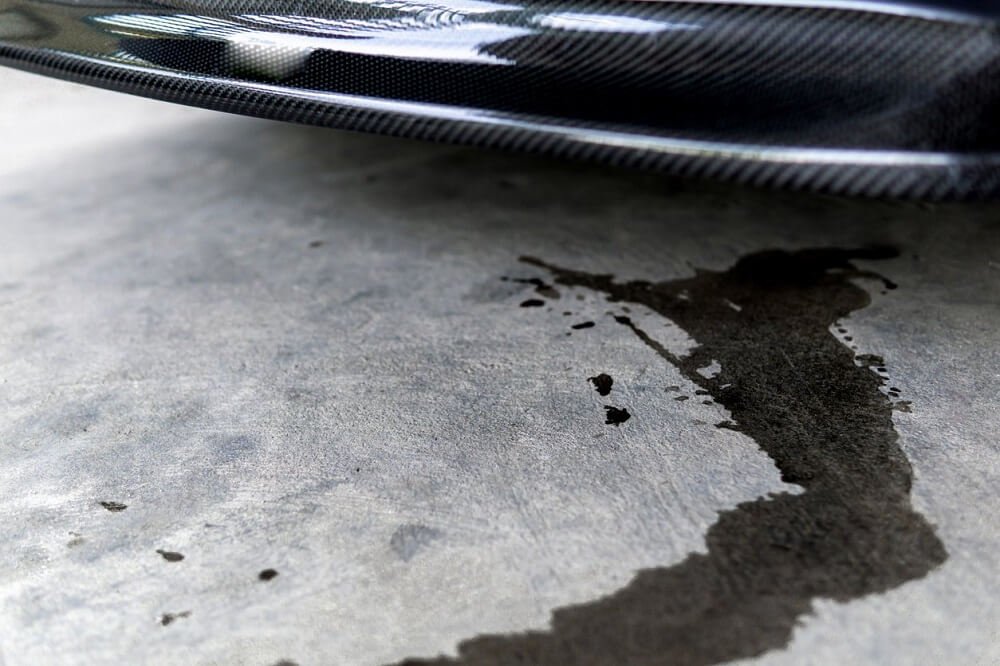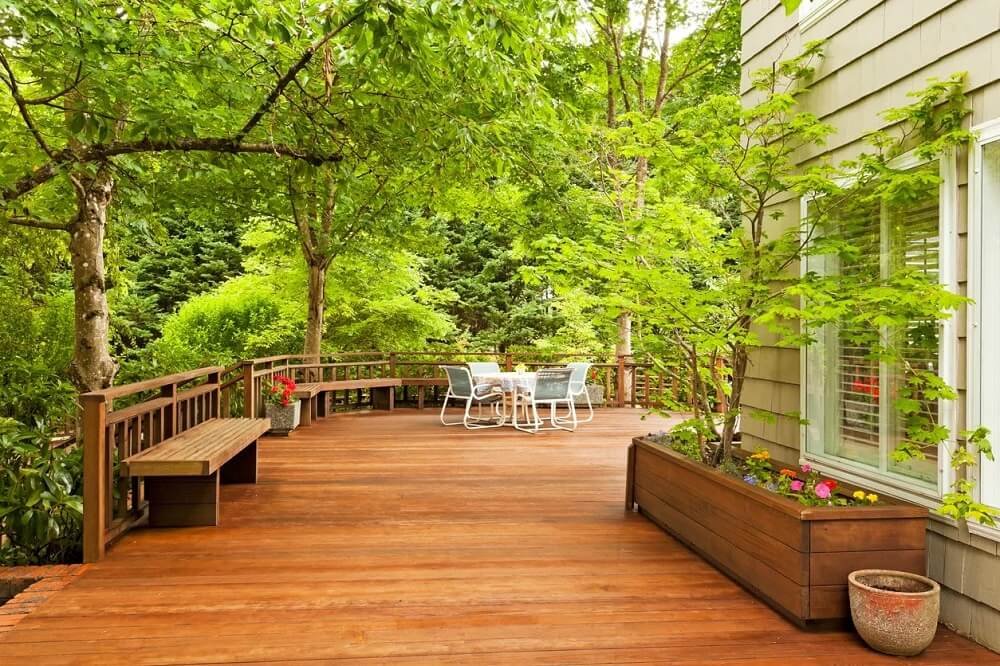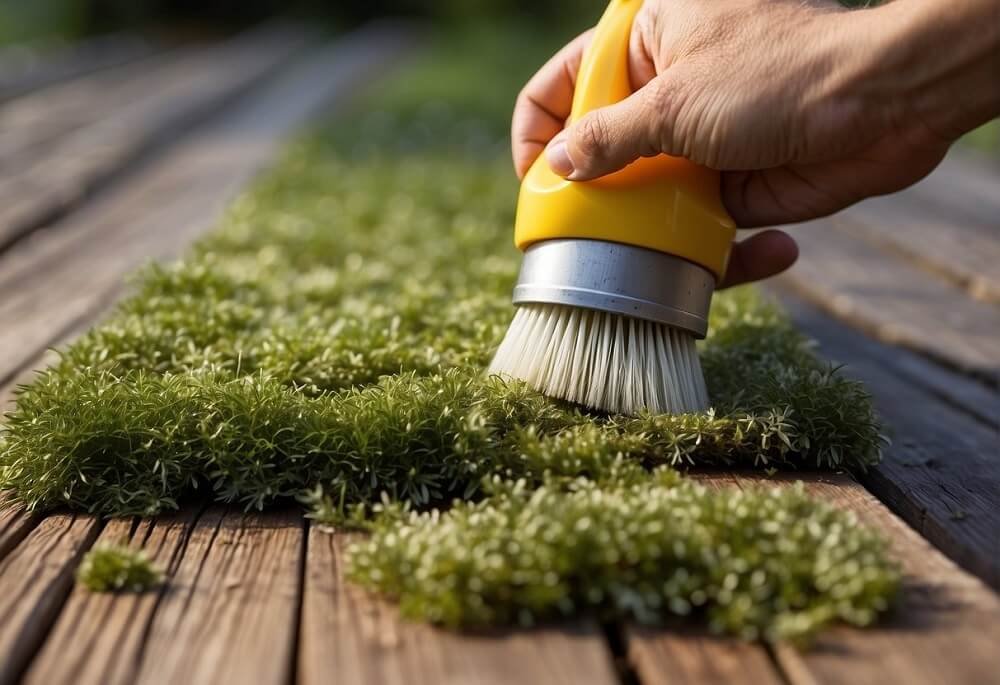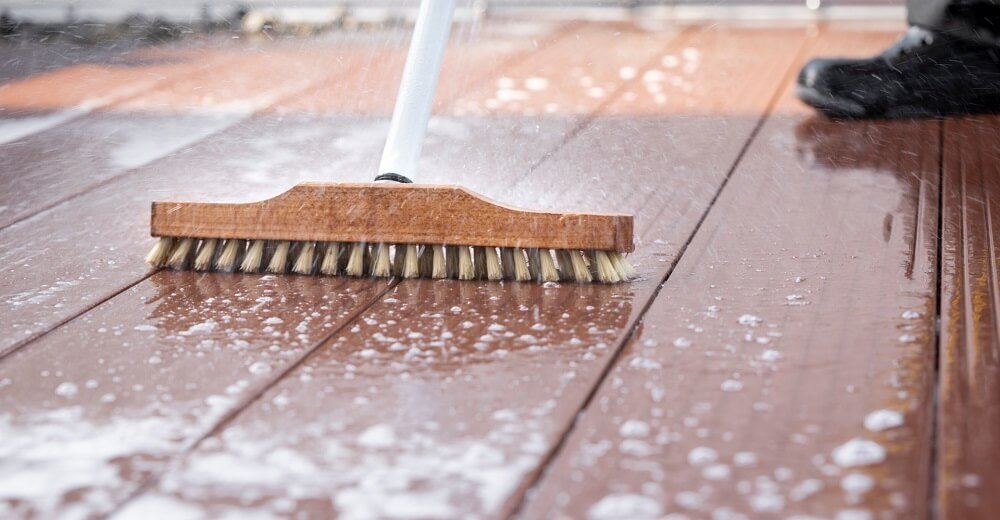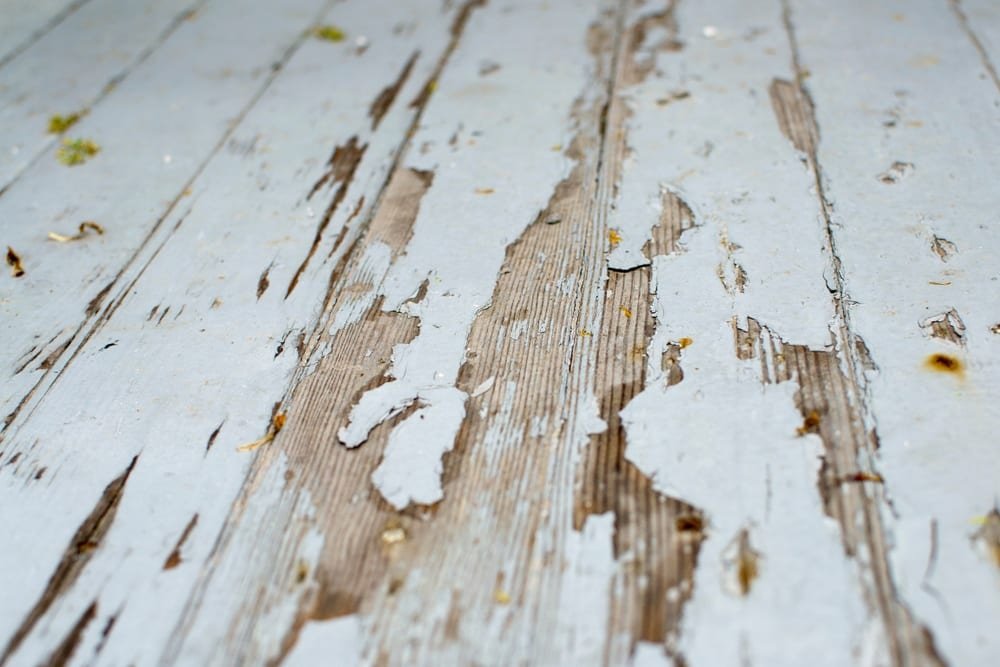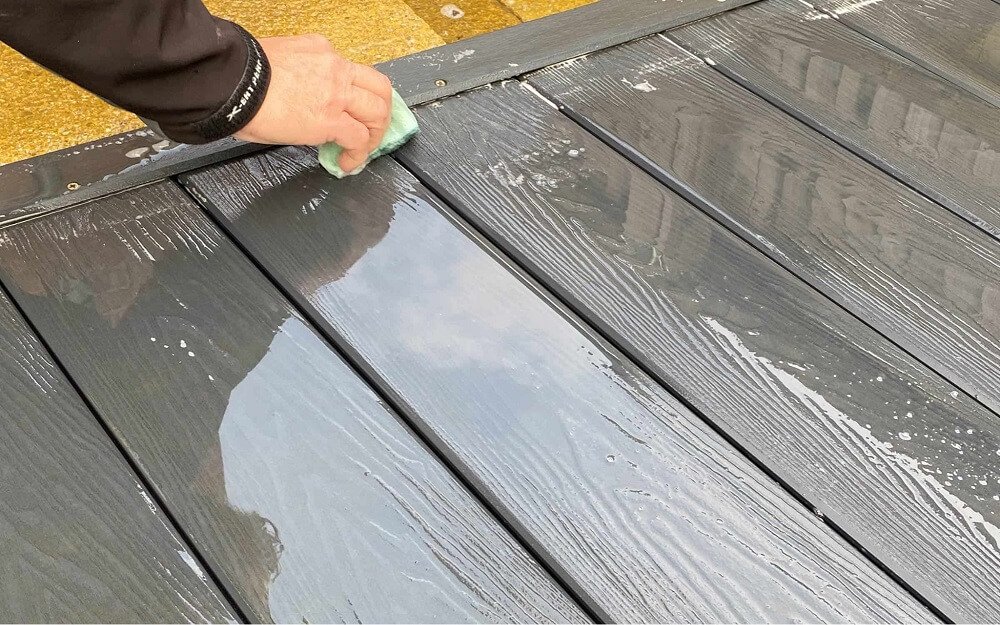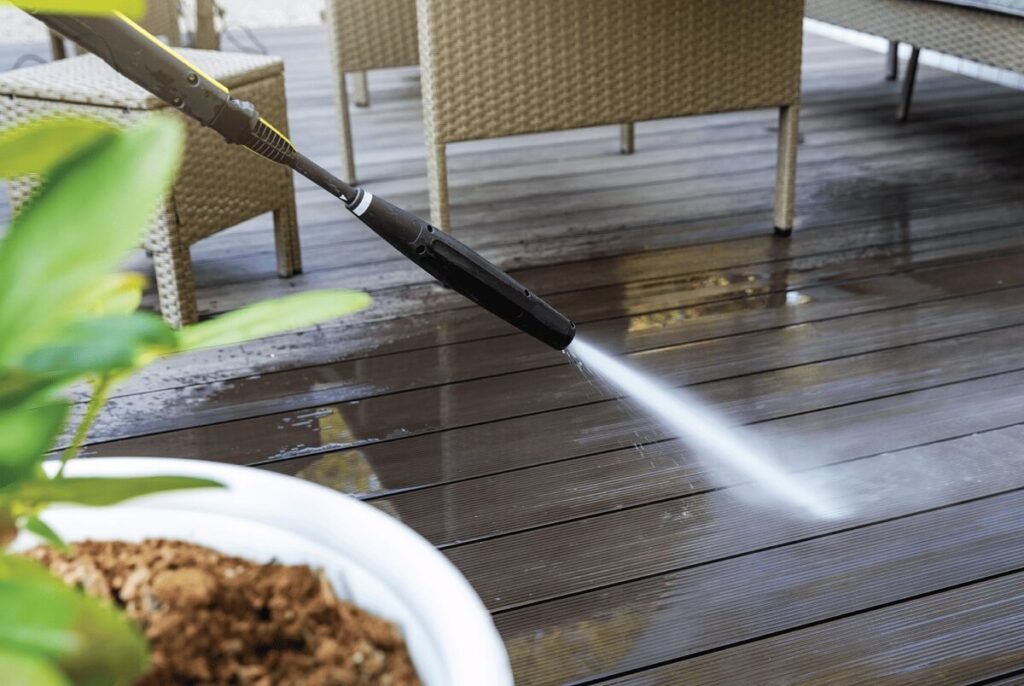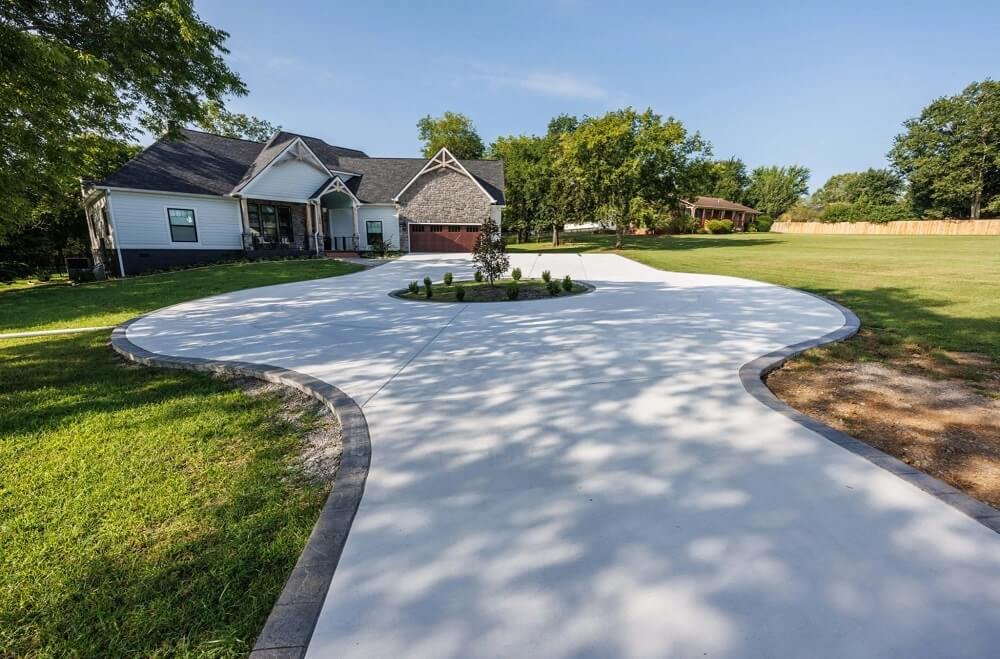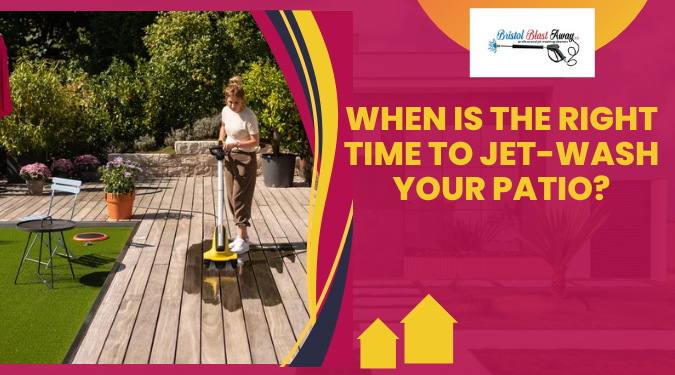We specialise in gentle roof cleaning methods that restore your roof’s look and prevent moss from coming back.
Moss might seem harmless at first, but over time it traps moisture, loosens tiles, and can quietly damage your roof’s structure. What begins as a small patch of green can soon spread across the surface, leaving your home vulnerable to leaks and costly repairs.
Cleaning your roof doesn’t have to be risky or complicated. With a careful approach and the right equipment, you can remove moss safely while protecting both your tiles and yourself. It’s all about working smart, not hard and taking the right steps to keep your roof clean, dry, and strong for years to come.
Check the roof and plan the job
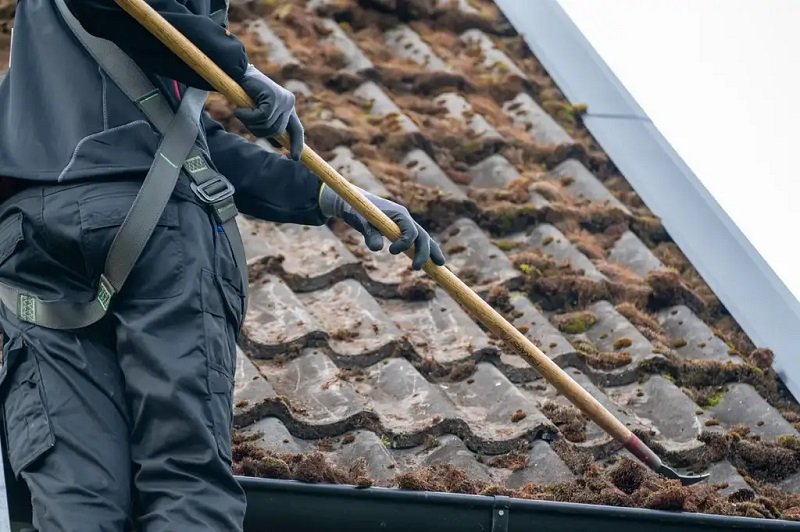
Before you even touch a brush or ladder, take a few minutes to properly assess your roof. Understanding what you’re working with helps you choose the right cleaning method and keeps both you and your property safe.
Look at your roof type and tile condition
Different roofs need different levels of care. Concrete tiles are fairly tough, but slate or clay tiles can be more fragile and easily cracked under pressure. Check for any loose, broken or missing tiles, these should be repaired before cleaning.
Assess the pitch and access points
The steeper the roof, the trickier and more dangerous the job. Identify safe access points for your ladder and make sure it’s placed on solid, level ground. Using a roof ladder or safety harness is highly recommended to prevent accidents.
Evaluate how extensive the moss is
A light covering can usually be brushed away easily, while thick or long-established moss may require biocide treatment or professional cleaning. This helps you decide how much time and equipment you’ll need.
Check for fragile or damaged areas
Old tiles, flashing, or ridge caps can be more delicate than they appear. Take care not to put weight or pressure on weak spots, and always work slowly and steadily.
Protect the surroundings
Before you begin, cover or move anything that could be affected by falling debris or cleaning products, such as gutters, downpipes, nearby plants and outdoor electrics. A little preparation goes a long way in preventing unwanted mess or damage.
Choose a safe method to remove roof moss
Not every roof should be cleaned the same way. The right method depends on your roof type, condition, and how much moss you’re dealing with. Choosing carefully helps you protect your tiles, avoid water damage, and achieve lasting results.
Methods you can use to remove roof moss
Here are the most common cleaning approaches, from simple DIY options to professional-grade treatments:
Manual brushing. A safe and gentle method using a stiff brush to remove surface moss. Best for small areas or routine maintenance.
Soft washing. Combines low-pressure water with a gentle cleaning solution to remove moss, algae, and dirt without damaging tiles.
Pressure washing (low pressure only). Effective but risky if done incorrectly. Use with care, and only on robust roof types.
Chemical cleaning. Involves applying specialised cleaning agents to break down organic growth; should be handled cautiously to avoid runoff issue
Biocide treatment. A popular long-term solution that kills remaining spores after manual or soft washing. Helps prevent regrowth for months or even years.
Steam cleaning. Uses hot water vapour to lift moss and dirt gently. Highly effective and eco-friendly, especially when combined with biocide treatment.
Choose the method based on your roof type
Every roof reacts differently to cleaning, so choosing the right approach is essential. The wrong method can strip coatings, loosen tiles, or shorten your roof’s lifespan, while the right one keeps it clean and intact for years.
For heavily soiled or moss-covered roofs, the safest and most effective method is steam cleaning, followed by a biocide treatment to kill any remaining spores. In some cases, low-pressure washing can be used, but only when carried out carefully by experienced professionals.
If you have a tile or slate roof, opt for soft washing or manual brushing to avoid cracking or lifting tiles. Once cleaned, a biocide treatment helps maintain results and prevents quick regrowth.
Felt and shingle roofs respond best to biocide treatments or gentle soft washing, as high pressure can cause lifting or tearing. On smaller areas, light manual brushing can help remove surface growth safely.
For metal roofs, both steam cleaning and soft washing work well. If there’s stubborn organic build-up, use non-corrosive chemical cleaners designed specifically for metal surfaces.
When it comes to flat roofs, the focus is on preventing pooling water and buildup in corners. A combination of soft washing and biocide treatment works best, with manual brushing reserved for edges and tight areas.
Finally, older or delicate roofs should be treated with extra care. In most cases, a biocide-only approach is safest, optionally followed by light manual brushing if the surface allows. This avoids damaging brittle or weathered materials while still removing moss effectively.
Safe moss removal methods you can do yourself
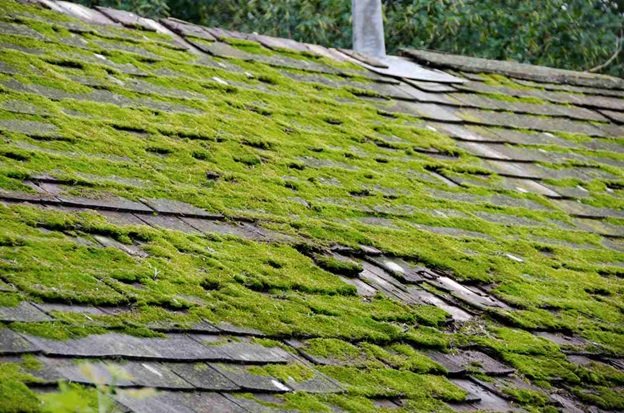
If your roof is within easy reach and only lightly covered in moss, there are several safe and effective ways to clean it yourself, no special training required. The key is to stay gentle, stay safe, and use the right tools for your type of roof.
Manual brushing
Manual brushing is the simplest and safest method for low, easily accessible roofs where moss hasn’t taken over.
Start by setting up a stable ladder and using a stiff, long-handled brush. Begin from the top of the roof and work your way down towards the edges. Clean in small sections, applying light pressure to avoid lifting or cracking the tiles.
When you’re done, collect the debris and make sure to clear out gutters and downpipes to prevent blockages.
Avoid metal brushes, as they can scratch or damage tile surfaces, and never try this method on steep or high roofs, safety first!
Soft washing
Soft washing is one of the most popular DIY-friendly methods for removing roof moss without causing damage. It uses low-pressure water combined with a biodegradable cleaning solution to loosen and wash away moss gently.
Mix the cleaning solution in a garden sprayer and apply it evenly from top to bottom. Let it sit for 15-20 minutes, but make sure it doesn’t dry out completely. Then, rinse gently with clean water at low pressure, repeating on any stubborn patches.
For long-lasting protection, you can finish with a biocide treatment after rinsing, this helps stop moss from coming back too soon.
Biocide treatment
A biocide treatment is perfect for ongoing roof maintenance or as a preventive step after cleaning. It works slowly but keeps your roof clean and moss-free for many months.
Choose a biocide product suitable for your roof type, and apply it evenly with a garden sprayer. There’s no need to rinse, simply let it work naturally over time. After two to three weeks, the moss will dry out and flake away on its own.
Apply only on dry days, and make sure runoff doesn’t reach your garden or ponds, as the solution can affect plants and fish.
Tip: The combination of manual brushing + biocide treatment offers excellent long-term results. You remove visible moss first, then stop regrowth before it starts, clean, safe, and sustainable.
How to prevent moss growth on your roof
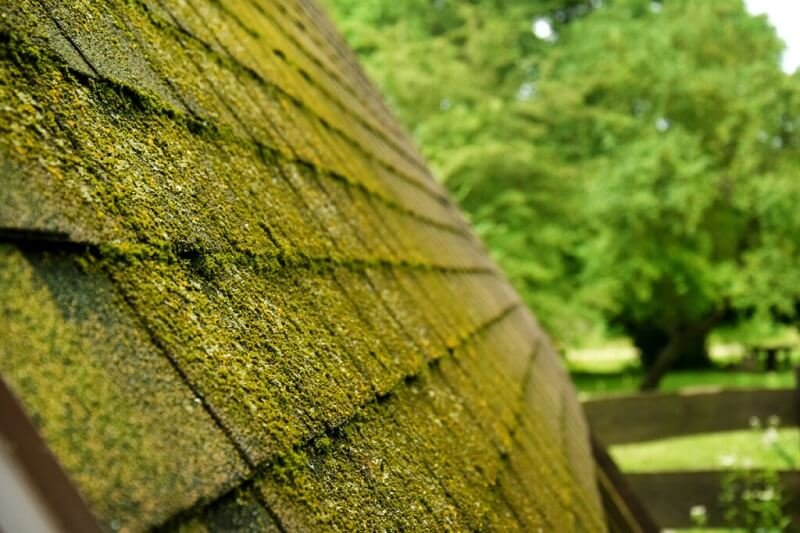
Once your roof is clean, keeping it that way is all about prevention. Moss thrives in damp, shaded areas, so small maintenance steps can make a big difference in stopping it from coming back.
Keep your roof dry and well ventilated
Moss needs moisture to grow. Make sure your roof and loft are well ventilated, allowing air to circulate and surfaces to dry quickly after rain. Check for blocked vents or insulation that traps humidity, dry roofs are far less likely to attract moss.
Trim nearby trees and branches
Overhanging branches create shade and retain moisture, which encourages moss to spread. Trim back any nearby trees to let more sunlight reach your roof. It’ll help the surface stay dry and also reduce the amount of leaves and debris that collect in gutters.
Apply a protective treatment
After cleaning, consider applying a biocide or roof protection treatment every year or two. These solutions create a barrier that prevents spores from taking hold, keeping your roof looking clean for longer. Many are biodegradable and safe for most roof types.
Check your roof periodically
A quick visual inspection every few months can save you a lot of work later. Look out for small patches of green, blocked gutters, or pooling water, these are early signs of moss or drainage issues. Treating them early means you won’t need another deep clean anytime soon.
Things you should never do when removing moss from your roof
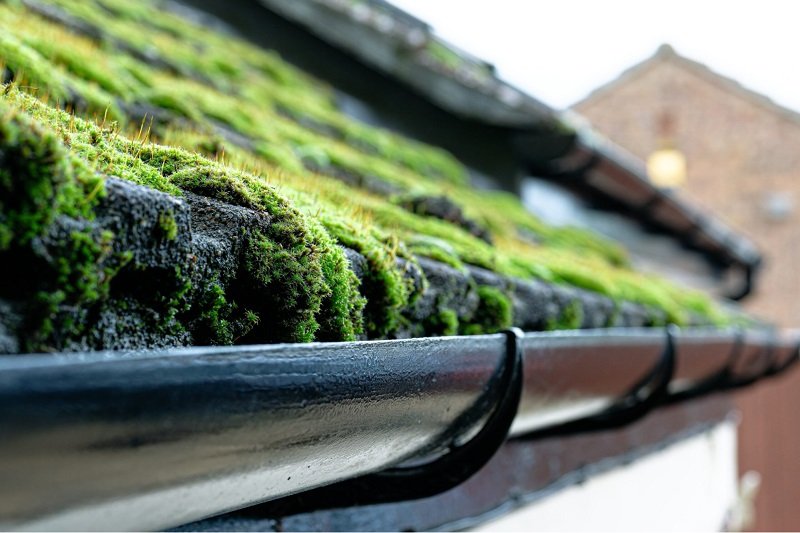
When it comes to roof cleaning, a few simple mistakes can cause serious damage, or even put your safety at risk. Avoid these common errors to protect both your roof and yourself.
Don’t use high pressure
High-pressure washing might seem effective, but it can easily lift or crack tiles and force water underneath them, leading to leaks and long-term damage. Always stick to low-pressure or soft washing methods instead.
Don’t scrape under tiles
Trying to remove moss by scraping underneath the tiles can break the seal that keeps water out. Once that protective barrier is damaged, moisture can seep in and cause hidden structural problems.
Don’t use harsh chemicals
Avoid bleach or strong acidic cleaners, they can corrode metal fixtures, stain tiles, and harm surrounding plants or lawns. Choose biodegradable, roof-safe products designed specifically for moss and algae removal.
Don’t work on wet or windy days
Roof surfaces can become extremely slippery when damp, and even a small gust of wind can throw you off balance. Always wait for a dry, calm day to work. Your safety is far more important than finishing the job quickly.
Don’t ignore gutters
After cleaning, check and clear your gutters. Moss debris often collects there, blocking water flow and causing overflow. Clogged gutters can also keep roof edges damp, the perfect condition for moss to return.
Don’t rush the job
Taking your time ensures a more thorough clean. Rushing often leaves behind tiny moss spores that quickly regrow. Work methodically, section by section, for results that last.
When it’s better to call a professional roof cleaner
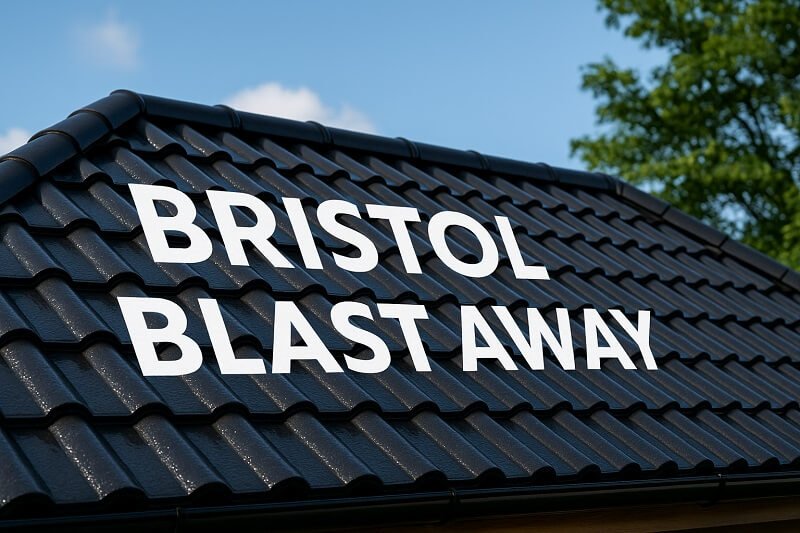
Some roofs are best left to the experts. Climbing onto a steep or fragile surface without proper equipment can be dangerous, and the wrong cleaning method can cause costly damage. If any of the following apply to your roof, it’s time to bring in a professional.
The roof is steep, high, or hard to access safely
Safety should always come first. Professional cleaners use harnesses, roof ladders, and fall-arrest systems designed for high or awkward roofs, equipment most homeowners don’t have.
Moss covers most of the surface or has built up for years
When moss has taken over, removing it manually can take days and still leave spores behind. A professional team can handle heavy moss growth quickly and thoroughly, using treatments that keep the roof cleaner for longer.
Tiles are old, cracked, or fragile
Older or weathered tiles need a delicate touch. Professionals know how to clean without breaking or lifting them, preventing leaks and preserving your roof’s lifespan.
You notice leaks, stains, or water damage
If you already see signs of moisture inside your home, cleaning alone won’t fix the problem. A professional inspection can identify underlying issues before they get worse.
You don’t have the right equipment or safety gear
DIY cleaning can seem cheaper at first, but once you factor in ladders, safety gear, and specialist cleaning solutions, hiring a professional often saves both time and money.
You prefer guaranteed results and professional aftercare
A proper roof cleaning service doesn’t just wash off moss, it restores, protects, and maintains your roof. Many professionals also offer biocide aftercare, ensuring your roof stays moss-free for years.
Professional roof cleaning in Bristol
If your roof needs more than a quick brush, Bristol Blast Away provides safe, eco-friendly roof moss removal and treatment across Bristol and nearby areas.
Using low-pressure washing, steam cleaning and professional biocide treatments, their experienced team can restore your roof while keeping every tile intact.
Common questions about roof moss removal
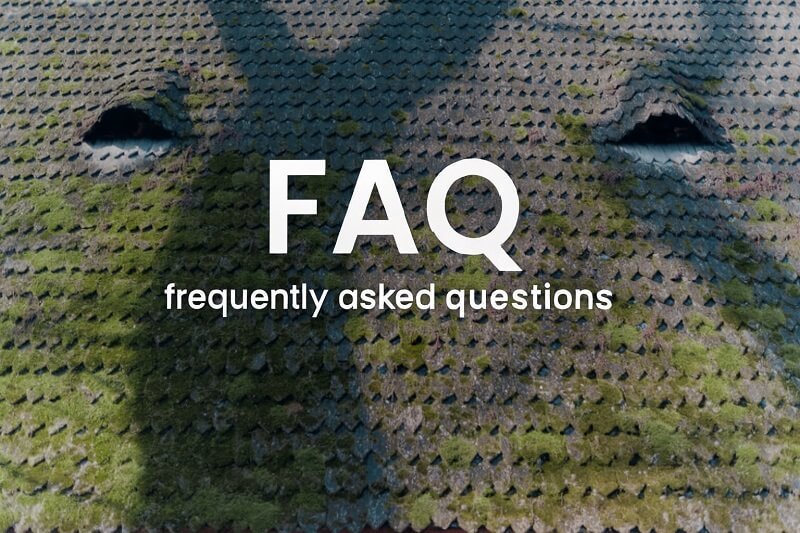
We’ve gathered some of the most common questions homeowners ask about roof moss removal. Here are the clear, simple answers you’ve been looking for:
1. Can I remove roof moss myself, or should I hire a professional?
If your roof is low and easy to access, and the moss growth is light, you can safely remove it yourself using manual brushing, soft washing, or a biocide treatment.
However, if your roof is steep, large, or heavily infested, it’s best to call a professional roof cleaner. They have the tools and experience to do the job safely and thoroughly.
2. What happens if I ignore moss on my roof?
Ignoring moss allows it to trap moisture, which can lift tiles, weaken mortar, and lead to leaks over time. The longer it’s left untreated, the more damage it can cause and the more expensive it becomes to fix.
3. Does cleaning gutters regularly help prevent moss growth?
Absolutely. Blocked gutters hold moisture and encourage moss to spread along roof edges. Cleaning your gutters regularly keeps water flowing freely and helps your roof dry faster after rain making it a less friendly environment for moss.
4. Can moss damage roof shingles?
Yes. Moss can lift and separate shingles, allowing water to seep underneath. Over time, this leads to rot, leaks, and structural deterioration. Regular cleaning and prevention treatments stop this before it becomes a serious problem.
5. When is the best time to remove moss from a roof?
The best time is during dry, mild weather, typically spring or early autumn in the UK. Avoid cleaning during very cold, wet, or windy conditions, as it’s unsafe and less effective.
6. How often should I clean or treat my roof for moss?
Most roofs benefit from a light cleaning or biocide treatment every 1-2 years. Regular maintenance prevents heavy build-up and makes future cleaning much easier.

